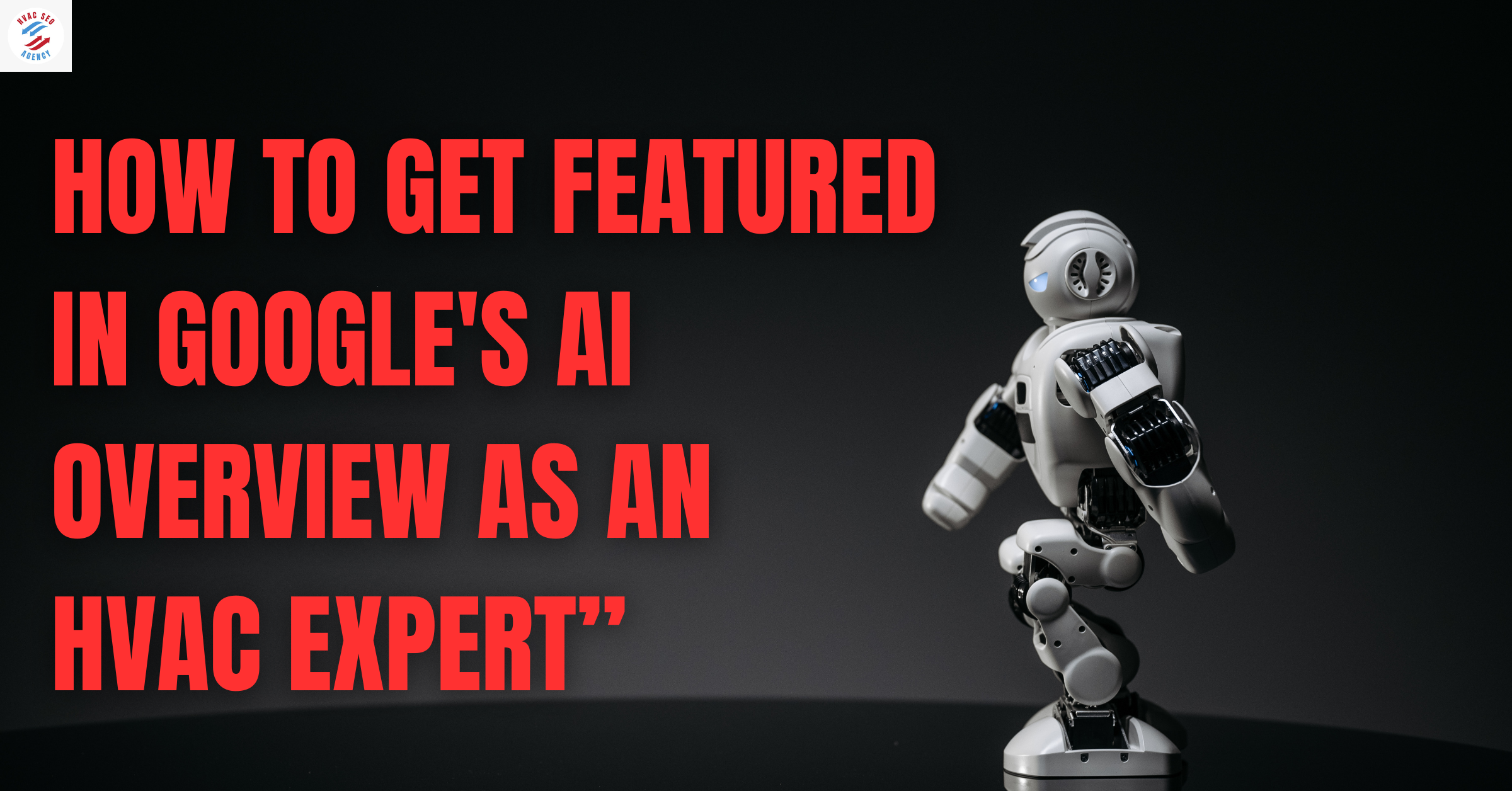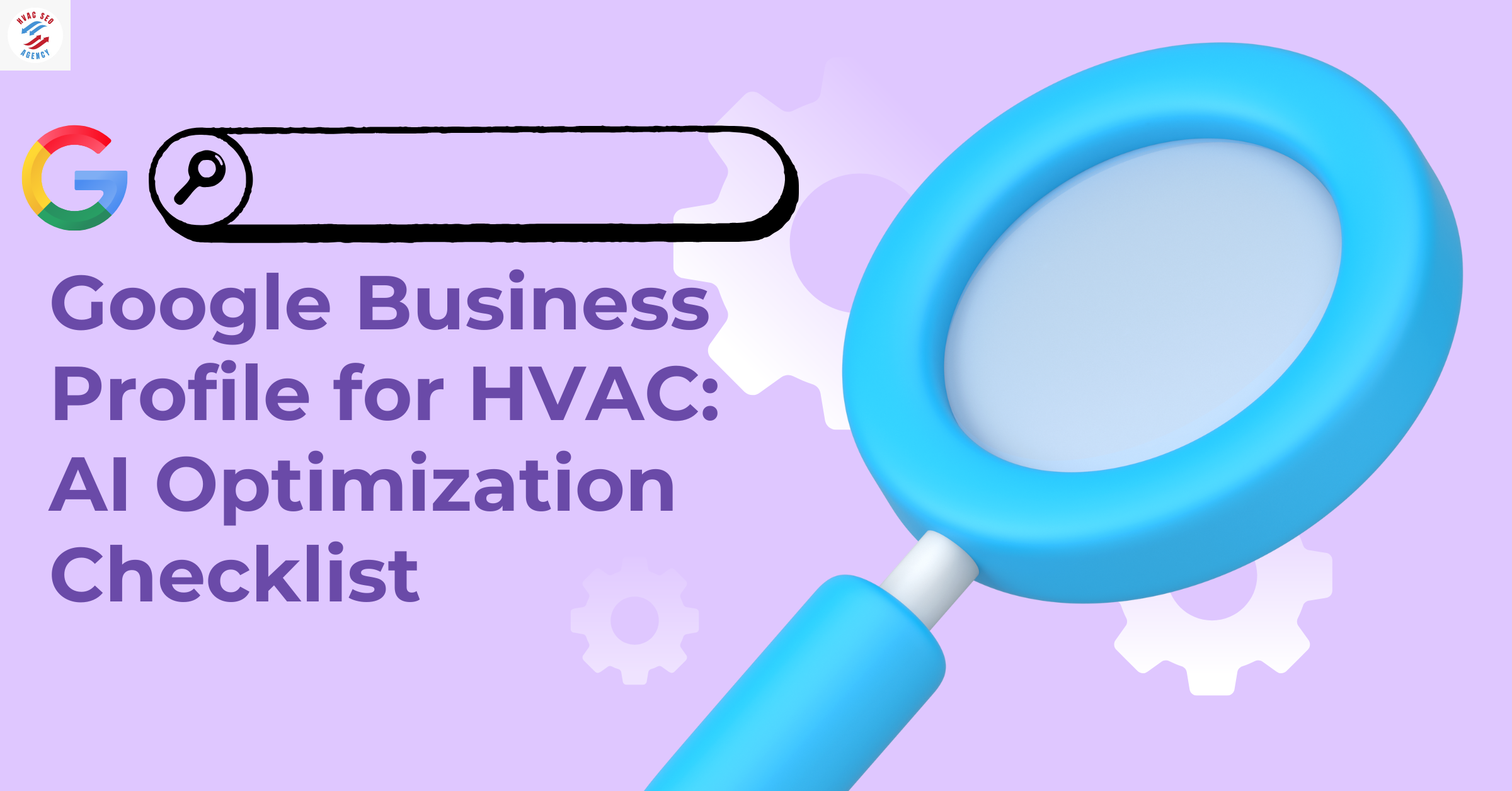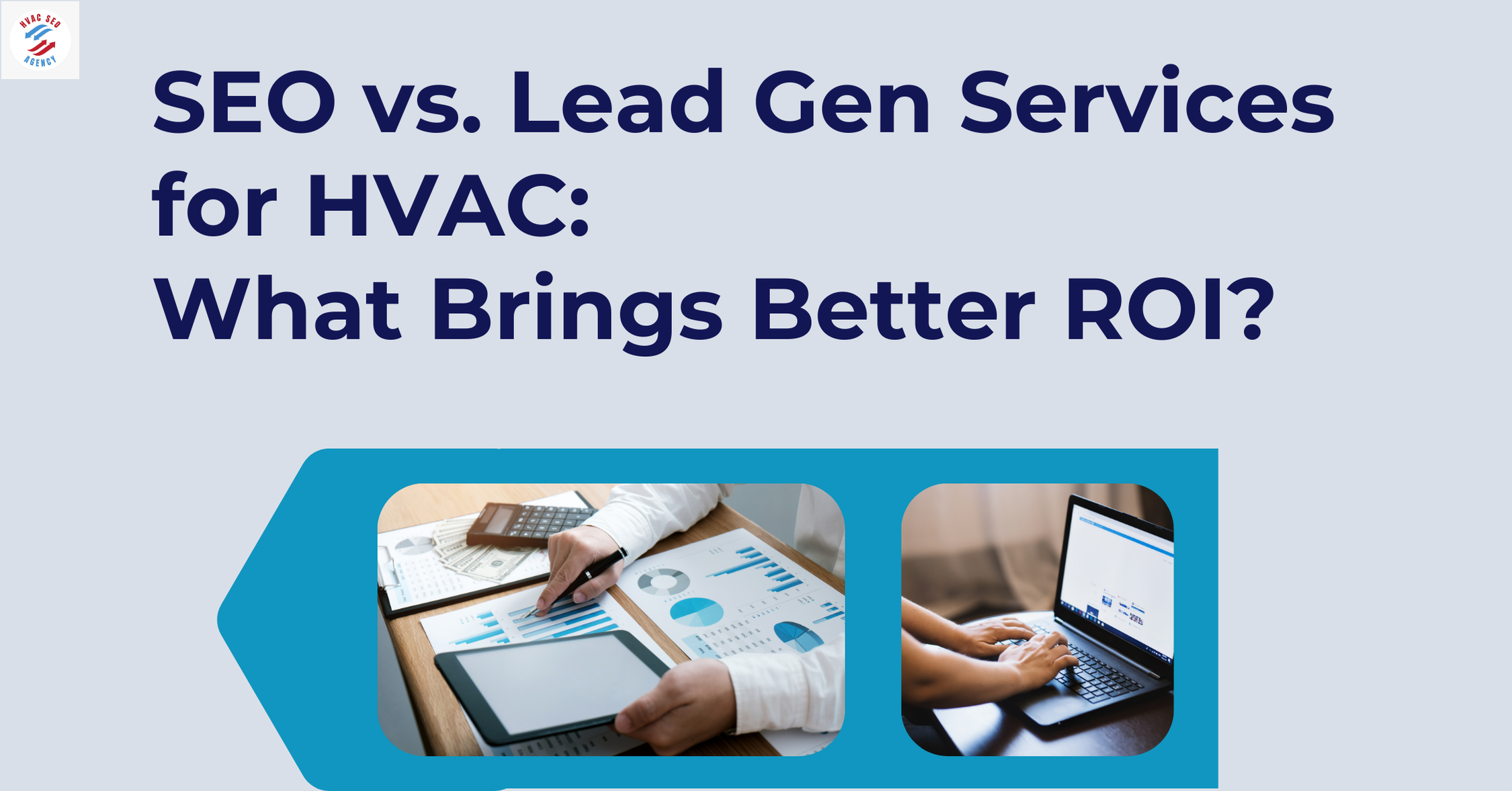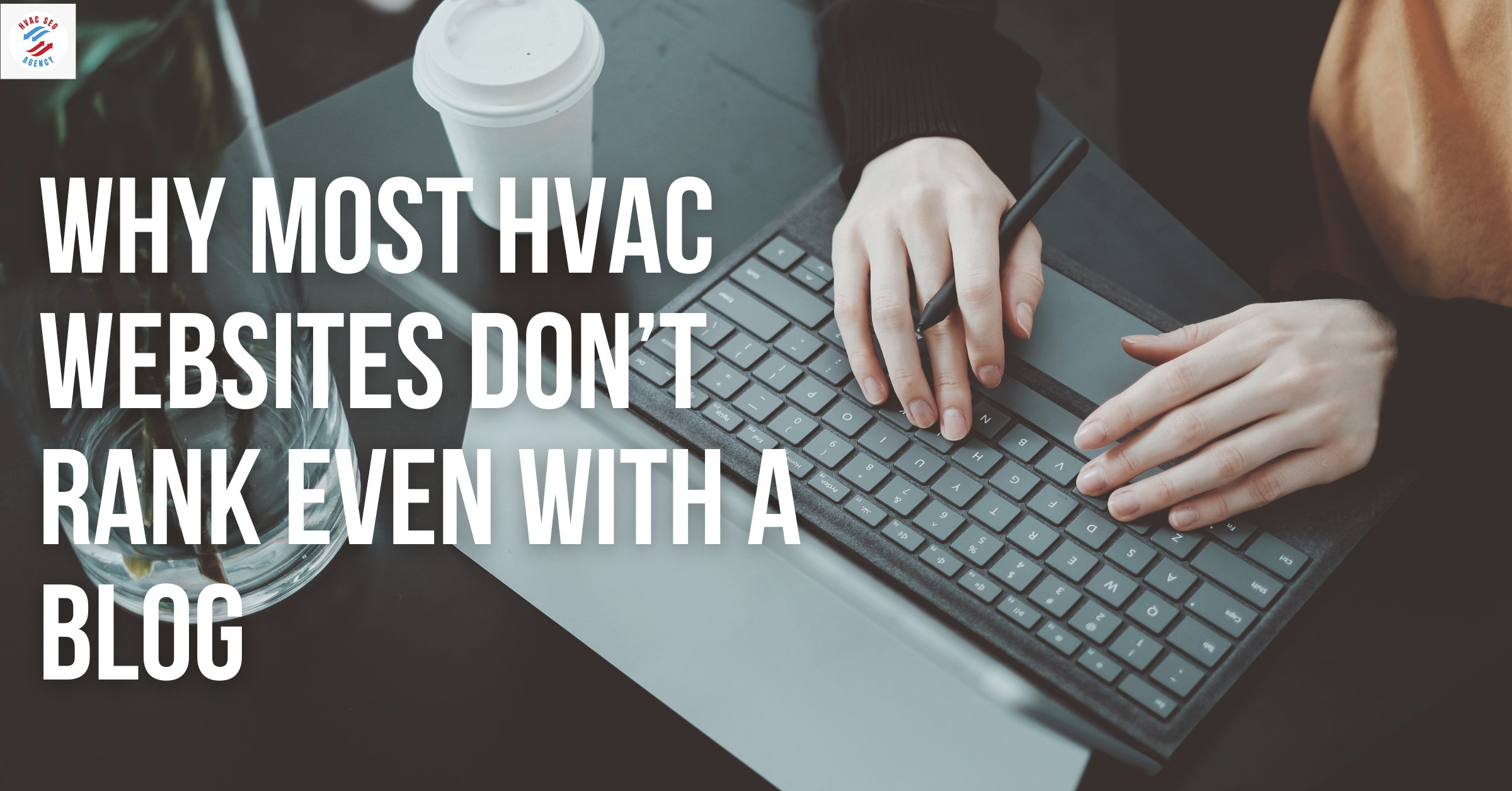How to Reduce Operating Costs Without Affecting Service Quality
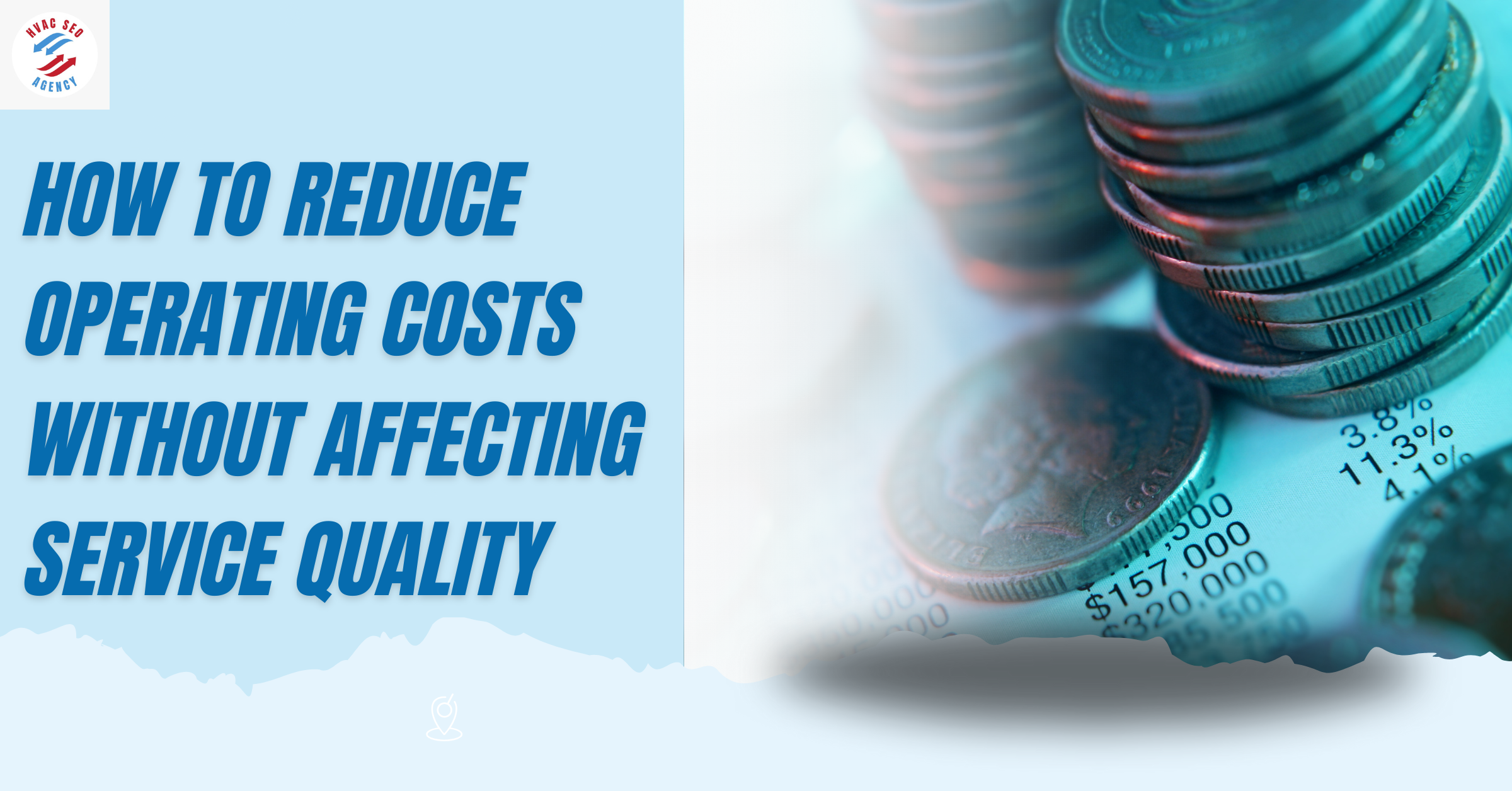
Section 1: HVAC Operating Costs
Understanding the operating costs of an HVAC business is crucial for maintaining profitability while ensuring high-quality service. By analyzing key cost components, businesses can identify areas for improvement and implement effective cost-reduction strategies. Partnering with an Affordable HVAC SEO Agency can also help HVAC companies lower marketing expenses by generating high-quality organic leads, reducing reliance on costly paid ads, and improving overall business efficiency. Implementing strategic cost-saving measures alongside digital marketing optimization can significantly enhance profitability without compromising service quality.
Key Cost Components in an HVAC Business
Operating costs in an HVAC business can be categorized into fixed and variable expenses:
Fixed Costs:
Equipment and Installation: Investments in HVAC systems, tools, and installation infrastructure.
Office Rent and Utilities: Expenses related to office space and associated utilities.
Insurance Premiums: Coverage for business liabilities, property, and equipment.
Variable Costs:
Labor Costs: Wages for technicians, administrative staff, and subcontractors. Labor often constitutes 30% to 50% of total operating expenses.
Vehicle Maintenance and Fuel: Expenses for service vehicles, averaging up to $15,000 annually.
Materials and Supplies: Costs for HVAC parts and supplies, typically accounting for about 20% of operational expenses.
Marketing and Advertising: Budgets allocated for customer acquisition and brand promotion, averaging around $10,000 annually.
Administrative Expenses: Office supplies, software subscriptions, and other overheads, totaling approximately $3,000 to $5,000 per month.
Industry Benchmarks for Operating Costs in the USA
Gaining insight into industry benchmarks helps HVAC businesses assess their financial health and identify potential cost-saving opportunities.
Average Annual Operating Costs:
HVAC service operating costs can vary widely, averaging around $200,000 per year.
Cost Breakdown:
A typical HVAC business's operating expenses may include:
Labor: 30% to 50%
Materials and Supplies: 20%
Vehicle Maintenance and Fuel: Up to $15,000 annually
Marketing and Advertising: $10,000 annually
Administrative Expenses: $3,000 to $5,000 per month
Table 1: Average Cost Breakdown of HVAC Businesses in the USA
Graph 1: Historical Trend of HVAC Equipment Costs
Note: The graph illustrates the annual producer price growth rate of HVAC and commercial refrigeration equipment in the U.S. from 2005 to 2023. Notably, there was a 7.6% increase in 2021 and a 20% surge in 2022.
Section 2: Strategies for HVAC Cost Reduction Without Compromising Service
By understanding these cost components and industry benchmarks, HVAC businesses can implement targeted strategies to reduce operating expenses without compromising service quality.
Reducing operating costs while maintaining service quality is essential for HVAC businesses aiming to maximize profits. Implementing strategic measures can lead to significant savings without compromising customer satisfaction.
Energy Efficiency Measures
Enhancing energy efficiency is a direct approach to reducing operational expenses. By upgrading HVAC systems and practices, businesses can achieve substantial cost savings.
Upgrade to High-Efficiency HVAC Systems: Transitioning to energy-efficient HVAC units can lead to considerable energy cost reductions. For instance, converting constant volume HVAC systems to variable air volume systems can save between $0.10 to $0.20 per square foot, translating to 10%–21% of HVAC energy costs.
Implement Smart Thermostats and Controls: Smart thermostats optimize heating and cooling based on occupancy and usage patterns, reducing energy consumption. Studies indicate that smart thermostats can lead to energy savings of approximately 10% annually.
Regular Maintenance and Energy Audits: Routine maintenance ensures HVAC systems operate at peak efficiency, preventing energy wastage. Energy audits can identify inefficiencies and areas for improvement, leading to informed decisions on upgrades and practices.
Fleet and Fuel Management
Efficient management of service vehicles is vital, as fuel can represent a significant portion of operational costs.
Adopt Fleet Management Solutions: Utilizing fleet management systems can optimize routes, monitor driver behavior, and reduce idling times. Such measures have been shown to decrease fuel consumption significantly.
Regular Vehicle Maintenance: Keeping vehicles in optimal condition ensures fuel efficiency and reduces unexpected repair costs. Scheduled maintenance can prevent issues that lead to increased fuel consumption.
Driver Training Programs: Educating drivers on fuel-efficient driving practices, such as smooth acceleration and adherence to speed limits, can lead to noticeable fuel savings.
Labor Cost Optimization Without Reducing Workforce
Enhancing workforce efficiency can reduce labor costs without necessitating layoffs.
Invest in Employee Training: Providing regular training ensures technicians are proficient with the latest technologies and practices, leading to improved job performance and customer satisfaction.
Implement Performance-Based Incentives: Rewarding employees for efficiency and quality work encourages productivity and reduces time spent on each job.
Utilize Scheduling Software: Advanced scheduling tools can optimize technician dispatch, reducing travel time and increasing the number of service calls handled daily.
Reducing Equipment and Maintenance Costs
Strategic management of equipment and maintenance can lead to cost savings. Implementing Budgeting Tips for HVAC Businesses to Maximize Profits can significantly enhance financial efficiency and ensure long-term sustainability.
Preventive Maintenance Programs: Regularly servicing equipment prevents costly breakdowns and extends the lifespan of HVAC systems. Preventive maintenance can result in energy cost savings of 10%–20%, reducing unexpected repair expenses and downtime.
Negotiate with Suppliers: Building strong relationships with suppliers can lead to discounts and better terms, reducing equipment procurement costs. Bulk purchasing agreements and long-term contracts can help HVAC businesses cut expenses while maintaining quality.
Invest in Quality Equipment: While the upfront cost may be higher, high-quality HVAC equipment often requires less maintenance and has a longer lifespan, leading to long-term savings. Investing in durable and energy-efficient systems enhances HVAC business efficiency and improves customer satisfaction.
By integrating these Budgeting Tips for HVAC Businesses to Maximize Profits, companies can streamline expenses while maintaining service quality and reliability.
In the modern HVAC industry, embracing digital transformation is essential for reducing operating costs and enhancing service quality. Two pivotal strategies in this realm are optimizing your Google My Business (GMB) profile and evaluating the efficacy of cold calling versus digital marketing for HVAC sales.
Google My Business Optimization for HVAC in Dallas
Optimizing your GMB profile is crucial for increasing local visibility and attracting potential customers in Dallas. An optimized GMB listing ensures your HVAC business appears prominently in local search results, leading to higher engagement and conversions.
Complete and Accurate Information: Ensure your business name, address, and phone number (NAP) are consistent across all platforms. Accurate NAP information enhances your credibility and improves local search rankings.
Select Appropriate Categories: Choosing the correct business category, such as "HVAC contractor," helps Google understand your services and connect you with relevant search queries.
Add High-Quality Photos: Uploading clear images of your services, team, and completed projects can increase customer engagement. Businesses with photos receive 42% more requests for directions and 35% more click-throughs to their websites.
Encourage Customer Reviews: Actively seeking and responding to customer reviews builds trust and influences potential clients' decisions. Positive reviews also enhance your local search rankings.
Regular Updates: Keep your GMB profile current with posts about promotions, updates, or industry news to engage your audience and signal to Google that your business is active.
Cold Calling vs. Digital Marketing: Which Works Best for HVAC Sales?
When evaluating lead generation strategies, it's essential to compare traditional methods like cold calling with modern digital marketing approaches to determine the most effective for HVAC sales.
Cold Calling:
Pros:
Direct communication allows for personalized interaction.
Can reach potential clients not actively seeking services.
Cons:
Often intrusive, leading to negative perceptions.
Low success rates; approximately 2% of cold calls result in a meeting.
Time-consuming and labor-intensive.
Digital Marketing:
Pros:
Targets users actively searching for HVAC services, leading to higher conversion rates.
Cost-effective digital marketing leads cost between $50-$150, often lower than cold calling expenses. Scalable and measurable, allowing for data-driven decisions.
Cons:
Requires ongoing management and optimization.
Competitive landscape may necessitate strategic differentiation.
Table 2: Comparison of Cold Calling and Digital Marketing for HVAC Sales
Graph 2: Cost per Lead Comparison – Cold Calling vs. Digital Marketing
Note: The graph illustrates that digital marketing strategies often result in a lower cost per lead compared to traditional cold calling methods.
By focusing on GMB optimization and leveraging digital marketing strategies, HVAC businesses in Dallas can enhance their visibility, attract more qualified leads, and achieve greater operational efficiency.
Section 4: Marketing Optimization for Lower Customer Acquisition Costs
Setting profitable rates without losing customers is a critical challenge for HVAC businesses. Implementing effective pricing strategies ensures profitability while maintaining customer satisfaction.
Understanding Cost Structures
A comprehensive grasp of your business's cost structure is the foundation for setting profitable rates. This includes direct costs like labor and materials, as well as indirect costs such as overhead expenses. Accurately calculating these costs is essential to ensure that pricing covers all expenses and achieves desired profit margins.
Choosing the Right Pricing Model
Selecting an appropriate pricing model aligns your services with customer expectations and market standards. Common models include:
Time and Materials (T&M): Charging based on the time spent and materials used. While transparent, it can lead to customer uncertainty regarding final costs.
Flat-Rate Pricing: Offering fixed prices for specific services provides predictability for customers and simplifies the billing process.
Each model has its advantages and should be chosen based on the nature of the service and customer preferences.
Conducting Market Research
Understanding local market rates and competitor pricing helps position your services competitively. Conducting thorough market research ensures your rates are neither too high to deter customers nor too low to undermine profitability.
Implementing Strategic Price Increases
Gradual and well-communicated price increases can maintain profitability without alienating customers. Strategies include:
Timing Adjustments: Implementing price changes during periods of high demand or when introducing new services can minimize customer resistance.
Communicating Value: Clearly explaining the reasons for price increases, such as rising operational costs or enhanced service quality, helps customers understand and accept the changes.
Offering Maintenance Agreements
Introducing maintenance agreements provides consistent revenue and strengthens customer loyalty. These agreements offer customers regular service at a locked-in rate, ensuring their systems operate efficiently while providing your business with predictable income.
Utilizing Technology for Pricing Accuracy
Leveraging technology, such as HVAC pricing software, ensures accurate and efficient pricing. These tools help in calculating costs, setting competitive rates, and maintaining consistency
Table 3: Comparison of HVAC Pricing Models
By implementing these strategies, HVAC businesses can set profitable rates that cover costs and generate desired profit margins without losing customers. A strategic approach to pricing not only enhances profitability but also strengthens customer relationships and positions the business for long-term success.
Effective financial planning and cost control are vital for HVAC businesses aiming to enhance profitability and ensure long-term sustainability. By implementing strategic budgeting, monitoring key financial metrics, and adopting efficient operational practices, HVAC companies can navigate industry challenges and capitalize on growth opportunities.
Importance of Financial Planning in the HVAC Industry
Financial planning serves as the foundation for informed decision-making and resource allocation. In the HVAC sector, where seasonal fluctuations and unexpected emergencies are common, a well-structured financial plan enables businesses to:
Manage Cash Flow: Anticipating periods of high and low demand allows for better cash flow management, ensuring funds are available for operations during off-peak seasons.
Mitigate Risks: Setting aside reserves for unforeseen expenses, such as equipment failures or emergency repairs, helps in maintaining operational stability.
Support Strategic Growth: Allocating resources for marketing, training, and expansion initiatives fosters business development and competitiveness.
Developing a Comprehensive Budget
A detailed budget acts as a roadmap for financial health, outlining expected revenues and expenditures. Key steps in creating an effective budget include:
Analyzing Historical Data: Reviewing past financial statements to identify trends in income and expenses.
Projecting Future Revenues: Estimating income based on market analysis, seasonal patterns, and economic indicators.
Identifying Fixed and Variable Costs: Categorizing expenses to understand which costs remain constant and which fluctuate with business activity.
Setting Financial Goals: Defining clear objectives, such as achieving a specific profit margin or reducing operational costs by a certain percentage.
Monitoring Key Financial Metrics
Regularly tracking financial performance metrics provides insights into the business's health and highlights areas for improvement. Essential metrics include:
Gross Profit Margin: Indicates the percentage of revenue exceeding the cost of goods sold (COGS). A healthy gross profit margin for HVAC businesses typically ranges between 50% to 55% .
Net Profit Margin: Reflects the percentage of revenue remaining after all expenses. Successful HVAC companies often aim for a net profit margin between 10% and 20% .
Accounts Receivable Turnover: Measures how efficiently the company collects payments from customers. A higher turnover rate suggests effective credit policies and collection processes.
Current Ratio: Assesses the ability to pay short-term obligations, calculated by dividing current assets by current liabilities. A ratio above 1 indicates good short-term financial health.
Implementing Cost Control Measures
Controlling expenses without compromising service quality is crucial for maintaining profitability. Strategies include:
Investing in Energy-Efficient Equipment: While the initial investment may be higher, energy-efficient HVAC systems can lead to significant long-term savings and potential tax advantages. Well-planned investments in such equipment can yield an ROI of up to 50% over their lifecycle .
Regular Preventive Maintenance: Scheduled maintenance of equipment prevents costly breakdowns and extends system lifespan, reducing unexpected repair costs.
Optimizing Inventory Management: Keeping track of inventory levels to prevent overstocking or stockouts ensures efficient use of resources and capital.
Negotiating with Suppliers: Building strong relationships with suppliers can lead to better pricing, discounts, and favorable payment terms.
Leveraging Technology for Financial Management
Adopting specialized accounting and management software streamlines financial processes and enhances accuracy. Benefits include:
Automated Bookkeeping: Reduces manual errors and frees up time for strategic planning.
Real-Time Financial Reporting: Provides up-to-date insights into financial performance, aiding in timely decision-making.
Integrated Job Costing: Tracks expenses for specific projects, allowing for precise pricing and profitability analysis.
Planning for Seasonal Variations
The HVAC industry experiences seasonal demand fluctuations, necessitating proactive financial strategies:
Building an Emergency Fund: Saving during peak seasons to cover expenses during slower periods ensures continuous operations.
Flexible Staffing Solutions: Hiring temporary staff during busy times helps manage workload without incurring year-round labor costs.
Diversifying Services: Offering complimentary services, such as maintenance contracts or indoor air quality assessments, can provide steady income throughout the year.
Tax Planning and Compliance
Staying informed about tax obligations and opportunities for deductions is essential:
Consulting Tax Professionals: Regular consultations with tax advisors ensure compliance and identify potential tax-saving strategies.
Utilizing Available Deductions: Taking advantage of deductions for energy-efficient equipment purchases or home office expenses can reduce taxable income.
Maintaining Accurate Records: Keeping detailed financial records simplifies tax preparation and minimizes the risk of audits.
Continuous Financial Education and Training
Investing in financial literacy for owners and key staff members fosters informed decision-making:
Attending Workshops and Seminars: Staying updated on industry trends and financial management practices enhances strategic planning.
Engaging with Professional Networks: Networking with other HVAC professionals provides insights into successful financial strategies and common pitfalls to avoid.
Scenario Planning and Forecasting
Preparing for various financial scenarios enables businesses to remain resilient:
Conducting Break-Even Analysis: Understanding the minimum sales required to cover expenses helps in setting realistic sales targets.
Developing Contingency Plans: Having plans in place for economic downturns or unexpected expenses ensures the business can navigate challenges without severe disruptions.
Enhancing Profitability Through Service Diversification
Expanding service offerings can open new revenue streams:
Introducing Maintenance Agreements: Offering service contracts provides consistent income and strengthens customer loyalty.
Implementing Flat-Rate Pricing: Simplifying pricing structures can enhance customer satisfaction and potentially increase profit margins.
Exploring Niche Markets: Specializing in areas such as energy-efficient system installations or commercial HVAC services can differentiate the business and command higher pricing.
By diligently applying these financial planning and cost control strategies, HVAC businesses can achieve greater efficiency, profitability, and resilience in a competitive market.
1. What are the most effective strategies for HVAC cost reduction?
The most effective strategies include investing in energy-efficient equipment, optimizing fleet management, implementing preventive maintenance programs, and leveraging digital marketing to reduce customer acquisition costs.
2. How can an HVAC business improve efficiency without increasing costs?
HVAC businesses can improve efficiency by using automation tools, optimizing technician scheduling, streamlining inventory management, and offering service contracts to generate steady revenue.
3. Is digital marketing more effective than cold calling for HVAC sales?
Yes. Digital marketing, including Google My Business Optimization for HVAC in Dallas, SEO, and social media marketing, typically offers a higher return on investment compared to cold calling, which has a lower success rate and higher cost per lead.
4. How can HVAC companies set profitable rates without losing customers?
Following How to Set Profitable Rates Without Losing Customers, businesses should conduct market research, assess their cost structure, and gradually increase prices while clearly communicating added value to customers.
5. What role does an Affordable HVAC SEO Agency play in cost reduction?
An Affordable HVAC SEO Agency helps businesses lower marketing expenses by increasing organic traffic, improving local search rankings, and reducing reliance on costly paid advertisements.
6. What financial planning strategies help HVAC businesses stay profitable?
Budgeting, cash flow management, tracking key financial metrics, tax planning, and diversifying service offerings are essential for maintaining profitability.
7. How can seasonal fluctuations be managed in an HVAC business?
Building an emergency fund, offering maintenance agreements, and providing additional services such as indoor air quality solutions can help HVAC companies maintain revenue during slow seasons.
Conclusion
Reducing operating costs while maintaining service quality is crucial for HVAC business success. Implementing cost-saving strategies such as energy efficiency improvements, preventive maintenance, fleet optimization, and digital transformation can significantly lower expenses. Digital marketing, including Google My Business Optimization for HVAC in Dallas, provides a cost-effective alternative to traditional sales methods like cold calling.
Additionally, How to Set Profitable Rates Without Losing Customers ensures that businesses achieve financial sustainability without sacrificing customer satisfaction. By leveraging financial planning, investing in quality equipment, and working with an Affordable HVAC SEO Agency, HVAC businesses can optimize expenses, improve lead generation, and boost long-term profitability.
Taking a data-driven approach to cost reduction and revenue optimization will help HVAC companies increase efficiency, expand their customer base, and stay competitive in the ever-evolving market.


